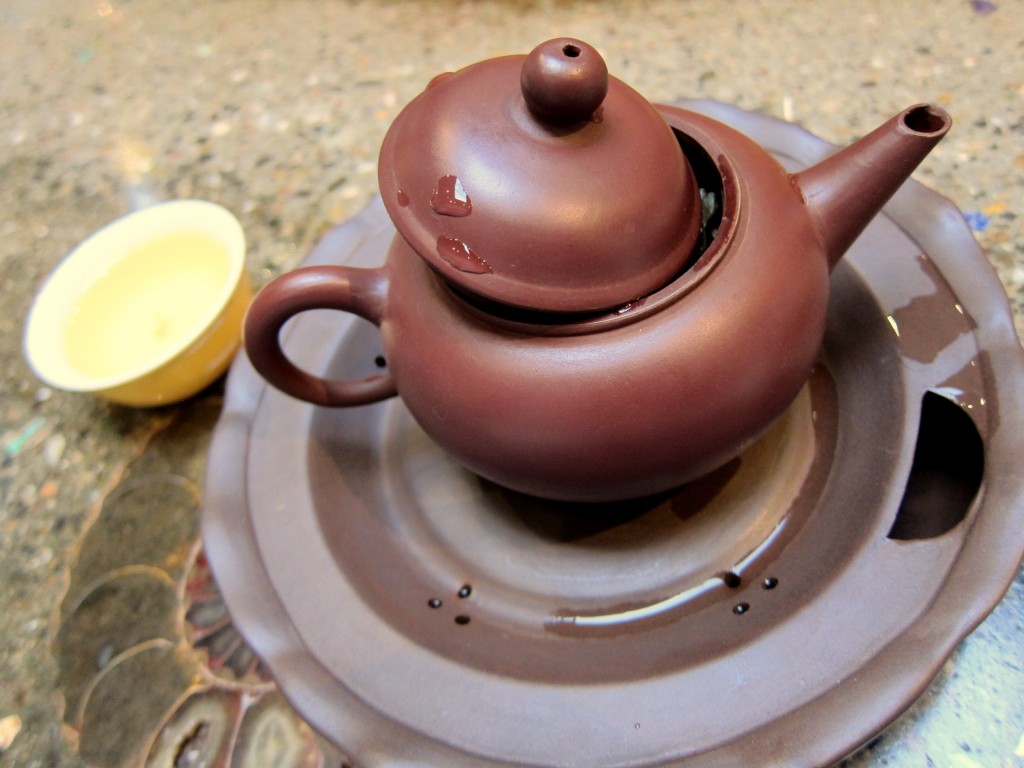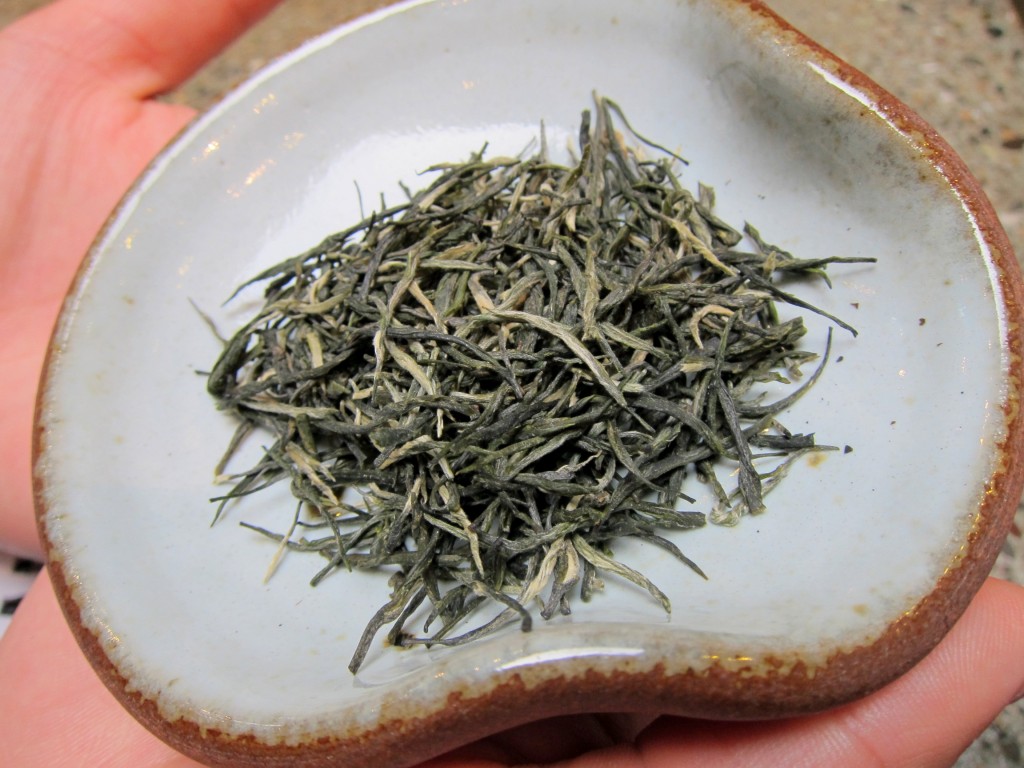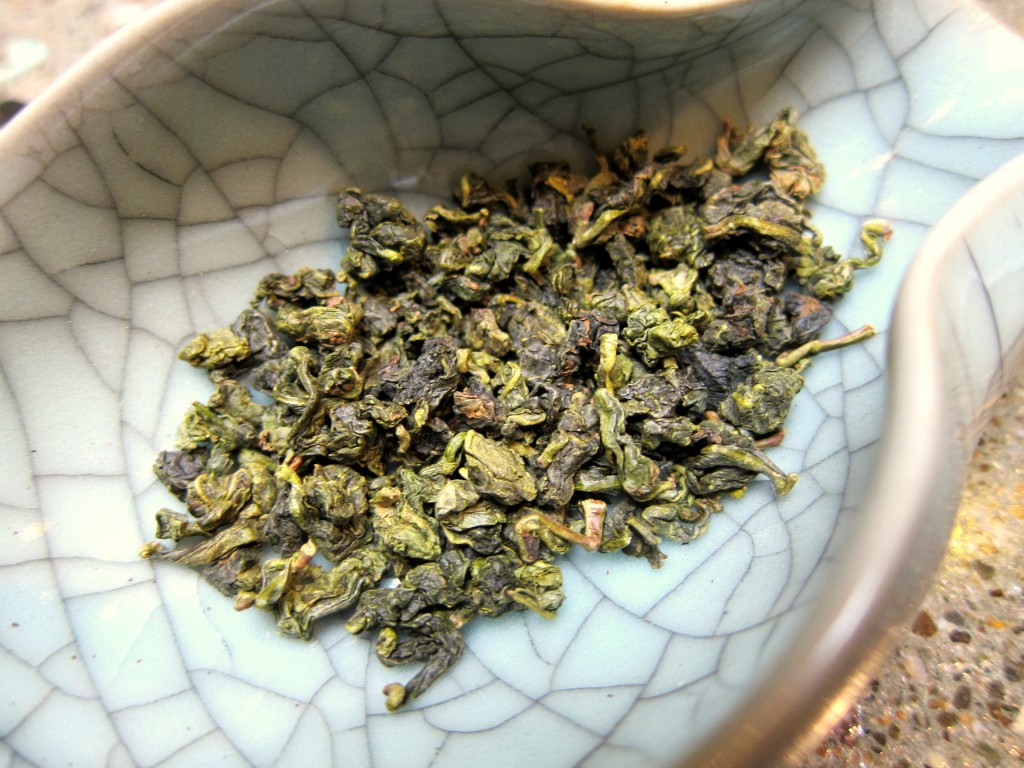We had two blind taste tests today to distinguish types of tea. In the first one, I failed horribly: mistaking an oolong (Baochong) for a white tea because it was so light, and thinking that a green tea (Lu Shan) was a roasted oolong because it tasted burnt, which I still can’t understand. In the second test, I got all 3 types right because the difference was obvious: oolong (Buddha’s Hand), Japanese green (sencha) and Sri Lankan black (Ceylon Orange Pekoe). (Sri Lanka used to be called “Ceylon”.) The Ceylon Orange Pekoe is stronger than the Darjeeling First Flush and lighter than the Assam.
The bulk of the night for me is getting to try two new kinds of tea:
- Mao Jian, which means Hair Tip because the leaf is rolled up so thin that it looks like the tip of a hair. “Hairy Tip” is not a correct translation. It’s green and thin, so it has the lowest steeping temperature (165 F), no rinsing, short time (10-15 s). It smells like fresh flower or pine needle. However, it tastes bitter and really dry. Not my type.
- Four Seasons oolong, so-called because it can be enjoyed in all four seasons. I doubt that there is any specific time to drink tea during the day, but teas, like foods, can either “heat up” or “cool down” your body. So depending on the weather and your body temperature, one kind of tea should be enjoyed more than another, e.g., green tea when you want to cool down, and red tea when you want to warm up (*). Steeped at 205 F for 30 s, Four Seasons is light and sweet (much lighter and sweeter than the Mao Jian). I wonder why the greener oolongs always taste so sweet. The only sweet green teas I have had are from Korea, but Korea doesn’t export its tea to the States.

We tried steeping another oolong in a yixing pot. Charlotte asked if there is any difference in warming the pot from the outside or the inside. So here’s the thing: of course there would be, you must always pour hot water into the pot to warm the inside. But in Chinese teahouses, sometimes they pour hot water on the outside after they close the lid to steep. This practice shows style, warms the pot more evenly, and helps with the timing. When the pot surface is so warm and smooth, part of the water evaporates away, the rest flows down into the base and leaves the pot surface completely dry after about 10 seconds. So after 3 drying times like that, you get a 30-second steeped oolong.
Two happy things today: I could identify the White Down by its fuzzy look and the Medium Roasted Tieguanyin by its stringent, light burnt taste. In other news, the Tieguanyin is sweet and nutty when Charlotte understeeped it, the roasting flavor disappeared.
(*) When I drink a lot of green tea, my hands turn to ice. When I drink the Four Seasons afterwards, they got a bit warmer. But the Four Seasons is not a heating tea, that’s why it can be drunk all year long, like a spring breeze.

